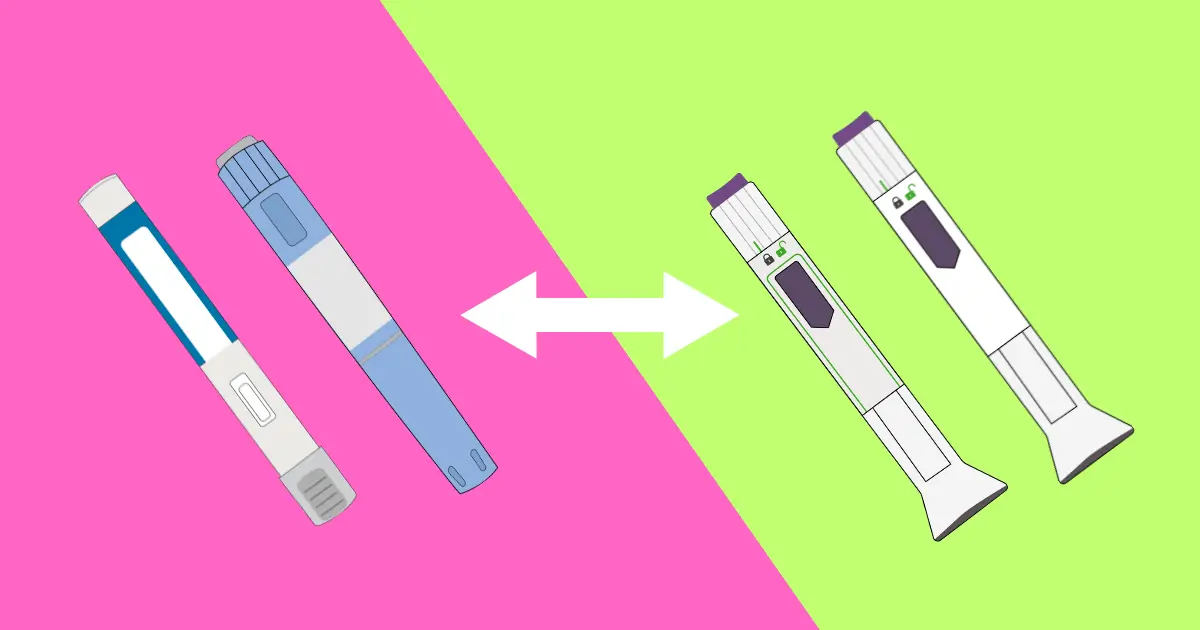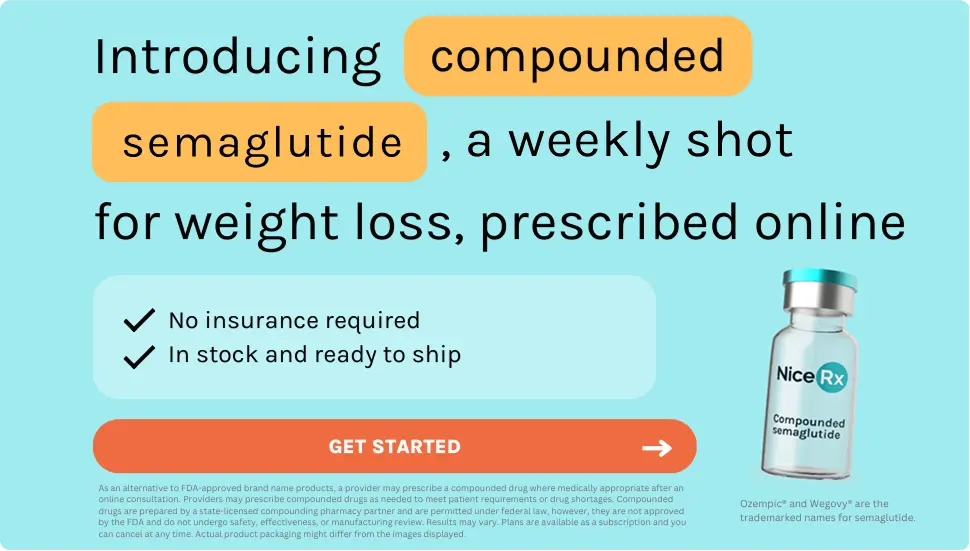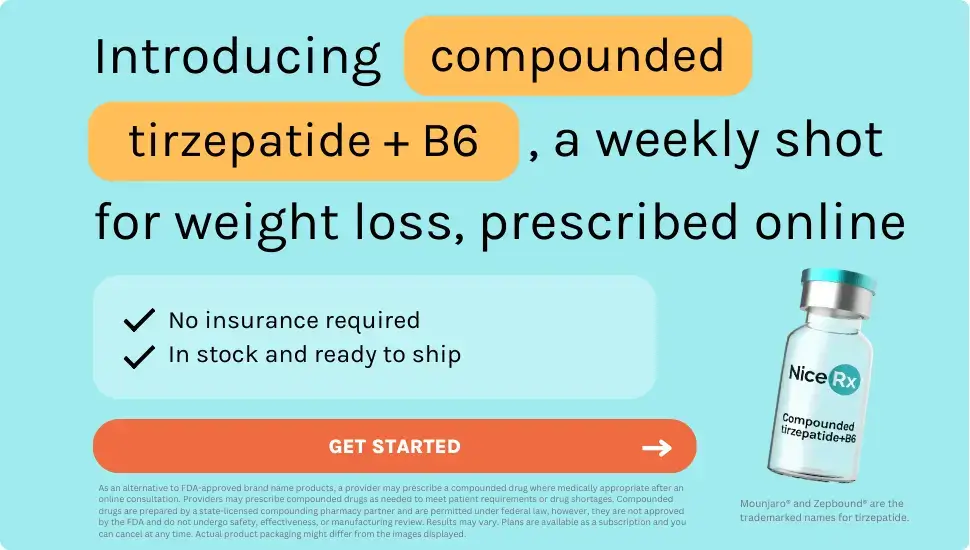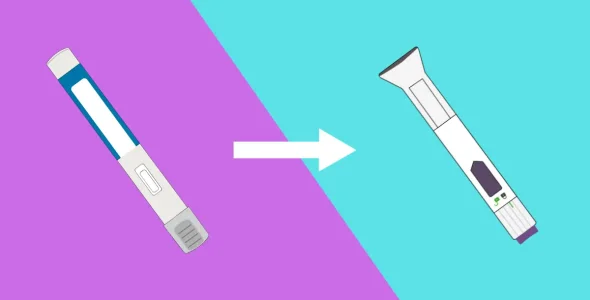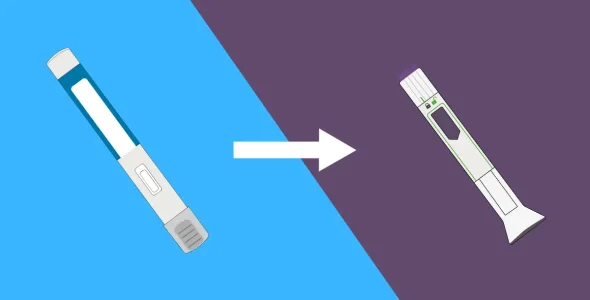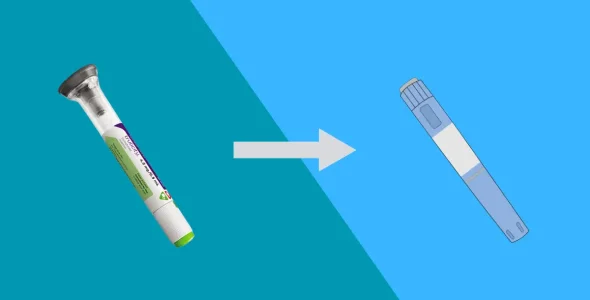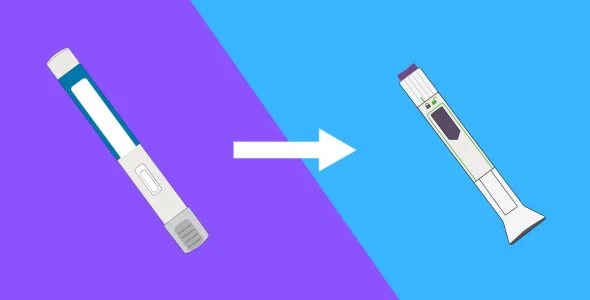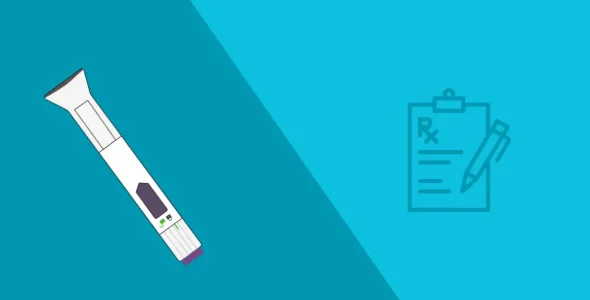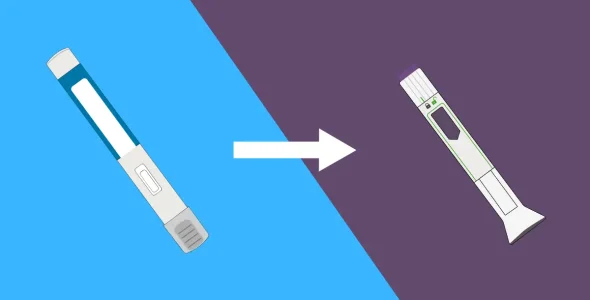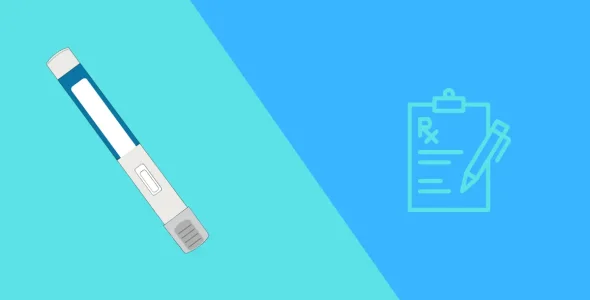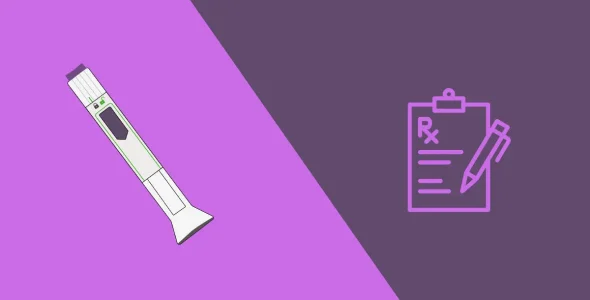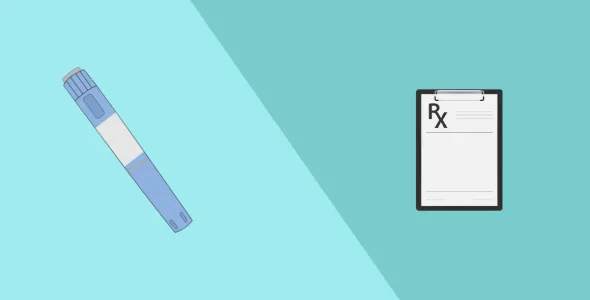GLP-1 dose conversion chart and safe switching guide
Navigating GLP-1 agonist conversions requires more than a simple chart; it demands a nuanced understanding of potency, indication, and titration to avoid adverse effects and ensure therapeutic success.
Key highlights
- Semaglutide, liraglutide, and dulaglutide are GLP-1 receptor agonists, while tirzepatide is a dual agonist at GLP-1/GIP receptors. These medications are used for chronic weight management and treating type 2 diabetes.
- You can switch between GLP-1 medications if you experience intolerable side effects with the current medication, do not achieve desired outcomes despite dose adjustments, or the medication is unavailable.
- There is no direct conversion between GLP-1 medications. Conversion charts provide an estimate of equivalent doses of medications. These guidelines are general and may not be suitable for every patient.
- If you plan to switch between GLP-1 medications, consult your healthcare provider first to ensure a safe transition. They will conduct a detailed assessment and recommend the most suitable treatment plan based on your health condition.
GLP-1s, or GLP-1 receptor agonists, are medications that mimic the action of the naturally occurring hormone glucagon-like peptide-1 and occupy its receptors. These include semaglutide, exenatide, liraglutide, and dulaglutide. They work by suppressing appetite, slowing gastric emptying, increasing insulin sensitivity, and regulating blood glucose levels. These effects promote weight loss and improve glycemic control. Tirzepatide is a dual GIP/GLP-1 receptor agonist that simultaneously occupies GLP-1 and GIP receptors.
Although GLP-1 medications have complex dosing schedules, you can consider switching between GLP-1 medications if you experience intolerable side effects with your current medication, do not get significant results, or due to a drug shortage. You may wonder how to safely switch between GLP-1 medications and what the prerequisites of switching medications are. This article serves as a clinical reference for comparing dosing, understanding titration protocols, and navigating the complexities of switching between agents.
The following charts are based on general guidelines and clinical trials. They are not a substitute for individual clinical judgment. Always consult the official FDA-approved Prescribing Information (PI) for each drug before making any dosing decisions. Dosing must be individualized based on patient tolerance, efficacy, and renal function. There is no universally accepted 1:1 conversion between GLP-1 RAs.
Understanding GLP-1 dosing: Starting low and titrating up
All GLP-1 medications (glucagon-like peptide-1 receptor agonists) are initiated at a low dose and their dosage is gradually escalated over time to enhance your body’s tolerability and minimize the risk of side effects, particularly gastrointestinal side effects such as nausea, vomiting, diarrhea, and constipation.
The standard dosing schedules for the most popular brand-name GLP-1 receptor agonists are summarized below.
Ozempic® (semaglutide) weekly injection dosing schedule
Manufactured by Novo Nordisk, Ozempic is injected subcutaneously once a week. You can inject the medication at any time of the day, on the same day each week.
- Week 1-4: 0.25 mg once weekly
- Weeks 5-8: 0.5 mg once weekly
- Weeks 9-12 (if needed): 1 mg once weekly, if further glycemic control is required
- Week 13 onwards (if needed): 2 mg once weekly, if your body can tolerate the previous dosage and further glycemic control is required
This medication is started at 0.25 mg per week until you reach the maintenance dose. Maintenance dose of Ozempic ranges between 0.5 mg and 2 mg. The maximum dose is 2 mg per week; you can not exceed this dosage.
Wegovy® (semaglutide) weekly injection dosing schedule
The dosing schedule of Wegovy is as follows:
- Weeks 1-4: 0.25 mg once weekly for the first 4 weeks
- Weeks 5-8: 0.5 mg once weekly
- Weeks 9-12: 1 mg once weekly
- Weeks 13-16: If tolerated, increase to 1.7 mg once weekly
- Weeks 17 onwards: If the dosage needs to be escalated further, increase to 2.4 mg once weekly, which is the maximum dosage.
Wegovy is also started at a low dose of 0.25 mg. Its dosage is escalated every 4 weeks. The maintenance dose of Wegovy ranges between 0.5 mg and 2.4 mg.
Mounjaro® (tirzepatide) weekly injection dosing schedule
Mounjaro is initiated at 2.5 mg per week, and its dosage is increased every 4 weeks.
- Weeks 1-4: 2.5 mg once weekly
- Weeks 5–8: 5 mg once weekly
- Weeks 9–12: 7.5 mg once weekly if you can tolerate the previous dosage and further glycemic control is needed
- Weeks 13–16: 10 mg once weekly, if you have still not reached your target blood sugar levels
- Weeks 17–20: 12.5 mg once weekly, if needed
- Week 20 and onwards: 15 mg once weekly, which is the maximum dosage of Mounjaro
If you experience side effects, your doctor may delay dosage escalation for the next 4 weeks or lower the dosage of Mounajro.
Zepbound® (tirzepatide) weekly injection dosing schedule
The weekly dosing schedule of Zepboud is as follows:
- Weeks 1-4 (starting dose): 2.5 mg once weekly for the first 4 weeks
- Weeks 5-8: 5 mg once weekly
- Weeks 9-12: 7.5 mg once weekly
- Weeks 13-16: If tolerated, increase to 10 mg once weekly
- Weeks 17-20: If the dosage needs to be escalated further, increase to 12.5 mg once weekly for 4 weeks
- Weeks 21 and onward: If the previous dose is ineffective, the next dose will be 15 mg once weekly.
Maintenance doses of Zepbound are 5 mg, 10 mg, and 15 mg per week. The medication is initiated at 2.5 mg per week, and its dosage is increased by adding 2.5 mg increments to the existing dose.
Trulicity® (dulaglutide) weekly injection dosing schedule
Trulicity is started at 0.75 mg per week and titrated as follows:
- Weeks 1-4 (starting dose): 0.75 mg once a week
- Weeks 5-8: 1.5 mg once weekly
- Weeks 9-12: 3 mg once weekly if the lower dose is ineffective.
- Week 13 and onwards: 4.5 mg once weekly, which is the maximum dose of Trulicity.
Victoza® (liraglutide) daily injection dosing schedule
Subcutaneous injections of Victoza are administered daily. The dosing schedule of Victoza is as follows:
- Week 1 (starting dose): 0.6 mg per day (to improve GI tolerability for at least 1 week)
- Week 2: 1.2 mg per day (for at least 1 week)
- Week 3: 1.8 mg per day for further glycemic control or when lower doses are ineffective.
Saxenda® (liraglutide) daily injection dosing schedule
Saxenda dosage starts with 0.6 mg per day in the first week. Its titration schedule is as follows:
- Week 1 (starting dose): 0.6 mg per day
- Week 2: 1.2 mg per day
- Week 3: 1.8 mg per day
- Week 4: 2.4 mg per day
- Week 5 and onwards: 3 mg per day (therapeutic or maintenance dose)
Rybelsus® (semaglutide) daily oral dosing schedule
Rybelsus comes in two formulations: R1 and R2. This oral medication is taken daily. Titration schedule of Rybelsus is as follows:
Formulation R1 (3 mg, 7 mg, 14 mg)
- Weeks 1–4 (Days 1–30): 3 mg once daily (This is the starting dose that may not be effective for glycemic control)
- Weeks 5–8 (Days 31–60): 7 mg once daily
- Weeks 9 and onwards (Day 61+):
- Maintain 7 mg once daily if adequate control is achieved
- Increase to 14 mg once daily if additional glycemic control needed
Formulation R2 (1.5 mg, 4 mg, 9 mg)
- Week 1–4 (Days 1–30): 1.5 mg once daily
- Week 5–8 (Days 31–60): 4 mg once daily
- Week 9 onward (Day 61+):
- Maintain 4 mg once daily if adequate control is achieved or,
- Increase to 9 mg once daily if additional glycemic control is needed
Why a conversion chart matters
Liraglutide, semaglutide, and dulaglutide are GLP-1 agonists, but they have different active ingredients, indications, efficacy, and potencies.
Semaglutide is available in both oral and injectable forms, while liraglutide and dulaglutide are injectables only.
All of these medications have different dosing schedules and frequencies. Semaglutide injections and dulaglutide (Trulicity) are administered once weekly. Oral semaglutide is taken daily in the form of Rybelsus tablets. Liraglutide injections (Victoza and Saxenda) are administered daily.
Tirzepatide (Wegovy and Zepbound) is a dual agonist at the GLP-1 and GIP receptors and is administered once weekly.
Conversion charts are helpful for safely switching between GLP-1 medications. They provide an estimate of equivocal dosages to minimize the risk of underdosing or overdose, maximize efficacy, and reduce GI side effects. However, these charts are not definitive equivalents. Clinical judgement is essential to determine the right dosage of medications.
The GLP-1 dose conversion chart
A dose conversion chart helps clinicians and patients switch between different GLP-1 agents while maintaining a therapeutic effect. These conversions are based on relative A1c and weight loss efficacy. These are general guidelines which may not be suitable for everyone. If you plan to switch to a GLP-1 medication, it is recommended to consult a healthcare professional. They will conduct a clinical assessment and recommend a personalized treatment regimen according to your health condition.
GLP-1 dose conversion chart
| Medication | Dosing route and frequency | Indication | Comparative doses | ||||||||||
|---|---|---|---|---|---|---|---|---|---|---|---|---|---|
| Tirzepatide (Mounjaro) | Subcutaneously weekly | Type 2 diabetes | 2.5mg* | 5mg | 7.5mg | 10mg | 12.5mg | 15mg | |||||
| Tirzepatide (Zepbound) | Subcutaneously weekly | Weight loss | 2.5mg* | 5mg | 7.5mg | 10mg | 12.5mg | 15mg | |||||
| Semaglutide (Ozempic) | Subcutaneously weekly | Type 2 diabetes | 0.25mg* | 0.5mg | 1mg | 2mg | |||||||
| Semaglutide (Wegovy) | Subcutaneously weekly | Weight loss | 0.25mg* | 0.5mg | 1mg | 1.7mg | 2.4mg | ||||||
| Dulaglutide (Trulicity) | Subcutaneously weekly | Type 2 diabetes | 0.75mg* | 1.5mg | 3mg | 4.5mg | |||||||
| Liraglutide (Victoza) | Subcutaneously daily | Type 2 diabetes | 0.6mg* | 1.2mg | 1.8mg | ||||||||
| Liraglutide (Saxenda) | Subcutaneously daily | Weight loss | 0.6mg* | 1.2mg | 1.8mg | 2.4mg | 3mg | ||||||
| Semaglutide (Rybelsus) | Orally daily | Type 2 diabetes | 3mg* | 7mg | 14mg | ||||||||
*= Starting dose, subtherapeutic for glycemic control and intended to be titrated.
There is no direct equivalent chart of GLP-1 medications. When switching, always initiate at the lowest dose unless instructed otherwise by your healthcare provider.
Some medications like liraglutide, dulaglutide, and semaglutide have proven cardiovascular benefits, along with other benefits such as appetite suppression, weight management, and glycemic control.
How to safely switch between GLP-1 medications
You can switch between GLP-1 medications if the GLP-1 you are currently taking is not showing significant results despite dosage adjustments, you are experiencing intolerable adverse effects, or you want to change dosing frequency (from weekly to daily or vice versa).
To make a safe switch, consult with your healthcare provider first. Discuss all possible options, pros and cons, queries related to insurance coverage, and risk of possible side effects with your healthcare provider. Remember, there is no direct conversion schedule for switching between GLP-1 medications. Follow these steps to switch safely:
- Stop taking the current medication and allow your body to clear the medicine.
- Begin the new medication at the starting dose per label. Do not start the new medication at a higher dose.
- Titrate the dosage of the new medication according to its FDA-approved dosing schedule in partnership with your healthcare provider.
If you are switching from a daily to a weekly dosage, you can take the first dose of the new medication the next day. If you switch between medications that are administered once weekly, wait for at least 7 days before administering the first dosage of the new medication.
Your doctor will guide you about the dosing schedule. Generally, a new medication is started at the starting dose, equivalent dose, or one dose step lower than the equivalent dosage. Your healthcare professional will decide which option is suitable for you.
What happens if I miss a dose?
If you have missed a dose of semaglutide (Ozempic and Wegovy) or tirzepatide (Mounjaro and Zepbound), take it within 5 days of the missed dose. If more than 5 days have passed, skip the missed dose and take your next scheduled dose on the upcoming regularly scheduled day.
If you miss a dose of Rybelsus, skip the dose and take the regular dosage the next day. Do not take a double dose of the medication.
In case of dulaglutide (Trulicity), take the missed dose within 72 hours or 3 days of the scheduled dose. If more than 72 hours have passed, skip the dose and take the next one on a regularly scheduled day.
If you miss a dose of liraglutide (Victoza or Saxenda), take the next usual dose the next day. If you have missed more than 3 doses, consult your healthcare professional to restart the medication at a lower dose.
Resuming therapy after a long break
If you took a long break and want to restart your medication, start at a lower dose. Lower doses are intended to give your body enough time to adjust and tolerate side effects. If the therapy has been interrupted for a long time, the body is no longer adapted to the physiological changes caused by the medication. You may experience severe side effects. This is why it is recommended to start the medication at a low dose and re-titrate it if you are resuming the medication after a long time.
Important considerations before switching GLP-1 therapy
The following are important considerations before switching GLP-1 medications:
Oral vs. injectable administration
Semaglutide is available in two forms: Injections (Ozempic and Wegovy) and oral tablets (Rybelsus). Other medications like tirzepatide, liraglutide, and dulaglutide are injectables. Rybelsus is taken on an empty stomach, 30 minutes before having a meal, with a maximum of 4 oz of water. Although the oral medications are easier to take, they have less bioavailability compared to injectable medications and may be less effective for weight loss and blood sugar control.
Side effects
Common gastrointestinal side effects of GLP-1 medications are nausea, vomiting, diarrhea, constipation, abdominal discomfort, and stomachache. These side effects typically occur during the initiation of the medication or during dose escalation. However, common side effects of GLP-1 medications are temporary, but they may persist in some patients. Severe or intolerable side effects may be a reason to switch GLP-1 medications. When switching, start the new medications at a lower dose to avoid the risk of these side effects.
Storage and handling
GLP-1 medications need proper storage and handling. Injectable pens, such as Ozempic, Trulicity, Wegovy, Mounjaro, Zepbound, Saxenda and Victoza, must be stored in a refrigerator (at 36°F to 46°F) before opening. Once you open them, they can be kept at room temperature or in the refrigerator (59°F to 86°F) for 28–56 days, depending on the brand.
Oral tablets of Rybelsus can be stored at room temperature in the original packs. Their blue cap has a drying agent to protect the medication from moisture.
Indication and FDA approval
When switching medications, ensure that the new medication is FDA-approved for its intended purpose. For example, if you are currently taking Ozempic for type 2 diabetes management, you can switch to FDA-approved medications for diabetes. In this case, you may be able to switch to Mounjaro instead of Wegovy or Zepbound.
If weight management is your primary goal, you can switch to Wegovy or Zepbound, as both are FDA-approved for weight management.
The following are FDA-approved indications of GLP-1 medications:
- Ozempic is indicated for treating type 2 diabetes. This medication is also used to help lower the risk of various cardiovascular diseases and worsening kidney disease (in patients with chronic kidney disease and type 2 diabetes).
- Wegovy is FDA-approved for chronic weight management in patients who are obese (BMI > 30) and overweight (BMI > 27) with at least one weight-related health issue, such as hypertension, heart disease, or dyslipidemia.
- Wegovy is indicated for reducing the risk of major cardiovascular events in adults who are overweight or have known cardiovascular diseases such as hypertension. This medication has also been approved for treating serious liver disease, known as ‘MASH’, in adults with moderate-to-advanced fibrosis.
- Mounjaro (GLP-1 and GIP receptor agonist) is FDA-approved for the treatment of type 2 diabetes mellitus.
- Zepbound is used to treat individuals with obesity ( BMI > 30) or overweight (BMI > 27) with at least one obesity-related condition, such as hypertension, heart disease, and hypercholesterolemia. Additionally, this medication is also FDA-approved for the treatment of moderate to severe obstructive sleep apnea in adults.
- Trulicity is FDA-approved for promoting glycemic control in patients with type 2 diabetes mellitus and reducing the risk of cardiovascular diseases.
- Saxenda is approved for weight management in adults and adolescents with obesity (BMI ≥30) or overweight (BMI ≥27) with conditions like high cholesterol, high blood pressure, or type 2 diabetes. It’s also approved for children aged 12 or older weighing over 60 kg (132 lbs).
- Victoza is FDA-approved for promoting glycemic control in patients with type 2 diabetes (adults and children aged 10 years or older) as an adjunct to dietary modifications and exercise.
Patient-specific factors
Choice of GLP-1 medication also depends on certain factors like the presence of renal or hepatic issues, history of severe gastrointestinal side effects (gallstones, severe stomach pain, and pancreatitis), blood sugar levels, and weight loss goals.
Liraglutide dosage needs continuous monitoring in patients with hepatic or renal impairment, as the medication can cause acute renal failure and exacerbate end-stage renal disease.
Other GLP-1 medications may cause acute kidney injury due to dehydration. However, no dose adjustments are typically required for patients with renal and hepatic problems. Healthcare professionals closely monitor such patients to minimize the risk of side effects and ensure optimal diabetes care.
Gradual titration
Always start the new GLP-1 medication at a low dose and titrate it up slowly and gradually to minimize the risk of gastrointestinal adverse effects, even if you were previously on a high dose of a GLP-1 medication.
Starting at a higher dose or increasing the dose too quickly can increase the risk of adverse events and side effects.
Patient assistance programs
Many GLP-1 medications offer patient assistance programs to lower the cost of these medications for patients. Currently, Ozempic Savings Program, Victoza Savings Program, Trulicity Savings Program, Rybelsus Savings Program, Mounjaro Savings Program, Zepbound Savings Program, and Wegovy Savings Program are offered by manufacturers of these medications. The Novo Nordisk patient assistance program (PAP) also offers free Ozempic and Rybelsus to eligible individuals.
Before making a switch, consider checking out savings programs to assess the affordability of the medication.
Cost and insurance coverage
Most GLP-1 medications are covered by insurance for the treatment of diabetes and for reducing cardiovascular risk. However, many insurance companies do not cover weight loss medications such as Wegovy and Zepbound when used solely for weight reduction. They consider obesity and overwintering a cosmetic concern rather than a medical need.
Before making a switch, speak with your insurance provider to confirm whether they cover the medication you have chosen.
Additionally, consider the cost of each medication to determine which one is more affordable for you. Discuss your cost and insurance concerns with your healthcare provider so they can help you choose the most suitable medication.
Speak with your healthcare provider
Always consult with a doctor or pharmacist for personalized medical advice and guidance. This will help minimize the risk of side effects and navigate smoothly on your weight loss journey.
GLP-1 medications are available by prescription only, so you will need to have a consultation with a provider before switching to a new medication.
Tips for managing side effects when switching
If you switch GLP-1 medications, you may experience gastrointestinal side effects such as nausea, diarrhea, stomach pain, appetite reduction, constipation, bloating, and excessive burping.
Follow these tips to mitigate the risk of side effects:
- Do not switch medications without consulting your healthcare provider. There is an increased risk of overdosing or underdosing GLP-1 medications when switching.
- Start at a low dose and gradually increase the dosage. Rapid escalation can lead to severe side effects.
- Stay well hydrated and eat in smaller portions more frequently to help prevent nausea.
- Avoid greasy, fatty, and oily foods that cause nausea.
- Rotate the injection site every time you inject the medication to avoid injection site reactions such as lumps, redness, and infections.
- If you experience hypoglycemia (low blood sugar levels), stop taking other glucose-lowering medications such as metformin and insulin glargine after consulting with your healthcare professional.
Additionally, switching between medications may interrupt your adherence to the medication. For example, if you were taking medication daily, switching to weekly medication may be challenging, as you may forget to administer your next dosage on the scheduled day due to the gap of one week. To avoid this issue, set reminders on your phone and consider connecting with a support program to help you take the medication regularly.
Detailed conversion scenarios
The following are detailed conversion scenarios of GLP-1 medications:
Switching from liraglutide (Victoza/Saxenda) to semaglutide (Ozempic/Wegovy)
Liraglutide is a daily injection, while semaglutide is administered once weekly. You cannot directly switch between liraglutide and semaglutide. Generally, you must wait at least 48 hours or 2 days after administering liraglutide (Victoza or Saxenda) to start weekly semaglutide. Your doctor will typically start semaglutide at a low dose of 0.25 mg once weekly and titrate the dosage afterwards.
If you plan to switch from liraglutide to semaglutide, consult your doctor for a personalized dosing schedule.
Switching from dulaglutide (Trulicity) to semaglutide (Ozempic)
According to general recommendations, a 7-day gap is recommended between switching these medications. You can administer the first dose of Ozempic after at least 7 days have passed since the last dose of Trulicity. This is done to avoid the risk of side effects and maintain the consistent effects of GLP-1 medications.
Ozempic (semaglutide) is more effective than dulaglutide (Trulicity). You may notice significant improvements in blood sugar levels and more obvious appetite suppression with Ozempic. The following is the equivalent dosage chart of Trulicity and Ozempic:
Trulicity to Ozempic dose conversion chart
| Trulicity dose | Equivalent Ozempic dose |
|---|---|
| - | 0.25 mg |
| 0.75 mg | - |
| 1.5 mg | 0.5 mg |
| 3 mg | 1 mg |
| 4.5 mg | 2 mg |
Timing the switch from Trulicity to Ozempic
| Time since last dose of Trulicity | When to take first dose of Ozempic |
|---|---|
| Less than 7 days | Wait at least 7 days after your last Trulicity dose |
| 7–14 days | You may start any time within this window |
| 14 or more days | You can start today |
You may notice gastrointestinal side effects while switching these medications, but they usually subside over time.
Switching from Ozempic to Wegovy
Ozempic and Wegovy have the same active ingredient, semaglutide, but their dosages and indications differ. Ozempic is mainly used for managing type 2 diabetes and reducing the risk of cardiovascular diseases, while Wegovy is used for weight loss in obese and overweight patients. Ozempic is used off-label for weight management, but Wegovy is approved by the FDA for this purpose.
If you plan to lose weight, Wegovy may be a better choice than Ozempic. Wegovy is available as a higher strength, 2.4 mg once weekly, which may be more effective for weight loss.
If you are already taking Ozempic, you can easily switch to Wegovy after consulting with your healthcare provider. They may directly switch to Wegovy and increase the dosage afterwards. As Wegovy has the same active ingredient as Ozempic, a gap in treatment is not necessary, and you can start taking Wegovy on your next scheduled injection day.
If you have skipped two or more doses, your provider will typically not make a direct switch. Instead, they will start the medication from the starting dose and titrate it gradually.
GLP-1 dose conversion FAQs
Can I switch from a daily GLP-1 to a weekly one?
Yes, you can switch from a daily medication to a weekly one. You will need to start the new medication at its initial and lowest dose and titrate it every 4 weeks to reach a maintenance dose. You cannot directly match doses and switch these medications, as there is no direct conversion.
Is there a direct conversion from Mounjaro (tirzepatide) to Ozempic (semaglutide)?
No, there is no direct conversion chart from Mounajro to Ozempic. Tirzepatide (Mounajro) is a dual agonist (GIP/GLP-1) and is more potent. A switch would always require starting semaglutide at its lowest dose and titrating up, unless instructed otherwise by your provider.
What should I do if my pharmacy is out of my current dose?
In this scenario, contact your doctor immediately rather than going without medication. Your doctor might be able to provide you with free samples provided by the manufacturer. If that is not feasible, consult your doctor to obtain a new prescription for a suitable dose or a different available medication.
How long does it take for the new dose to become fully effective after a switch?
Generally, it takes at least 12-17 weeks to reach the maximum tolerated and fully effective dose after switching to a new medication. However, you may notice changes in appetite and blood sugar level after 4-5 weeks as soon as the medication reaches a steady-state concentration. Remember, GLP-1 medications do not show immediate results. They can take weeks to months to show results.
Can I just match mg-to-mg between drugs?
No, each medication has a different potency and a specific administration schedule. You cannot just match the mg-to-mg dose to switch between medications. Do not try to change or switch medications on your own. Your doctor will assess your condition first and recommend the most suitable schedule with the help of an equivalence chart.
Can I stop one GLP-1 today and start another tomorrow?
The time duration between switching GLP-1 medications depends on the medication you were using previously. If you are shifting from daily to weekly medication, you can administer the medication the next day after stopping the previous medication. If you are switching between weekly medications, you should not administer two medications in the same week. Wait for at least one week after the last dosage to start a new medication.
What if I miss a weekly dose?
If you have missed a weekly dose, take the medication within 96 hours or 4 days of the skipped dose. If more than 4 days have passed, skip the dosage and administer the next dosage on the next regularly scheduled day. If you miss 2 or more doses, consult with your doctor for a dosage adjustment.
Conclusion: When and how to safely switch GLP-1 medications
GLP-1 medications have complex dosing schedules. Dosage conversion charts provide an estimate of equivalent doses and help design personalized dosing charts to switch between GLP-1 medications safely.
If you are taking any GLP-1 medication and plan to switch to another one, always start the new medication at the lowest dose and titrate it gradually to minimize the risk of side effects. Additionally, discuss potential side effects, costs, and insurance coverage concerns, as well as your health goals, with your healthcare professional. They will help you choose the most suitable medication.
Although converting to GLP-1 agonists is valuable for personalized treatment, you will need to consult a healthcare provider experienced in GLP-1 medications for careful planning and continuous monitoring. Never try to switch between GLP-1 medications on your own, as it may result in serious side effects. Maintain open communication with your doctor and work closely with them to ensure a safe health journey with the most effective and tolerable treatment plan.
